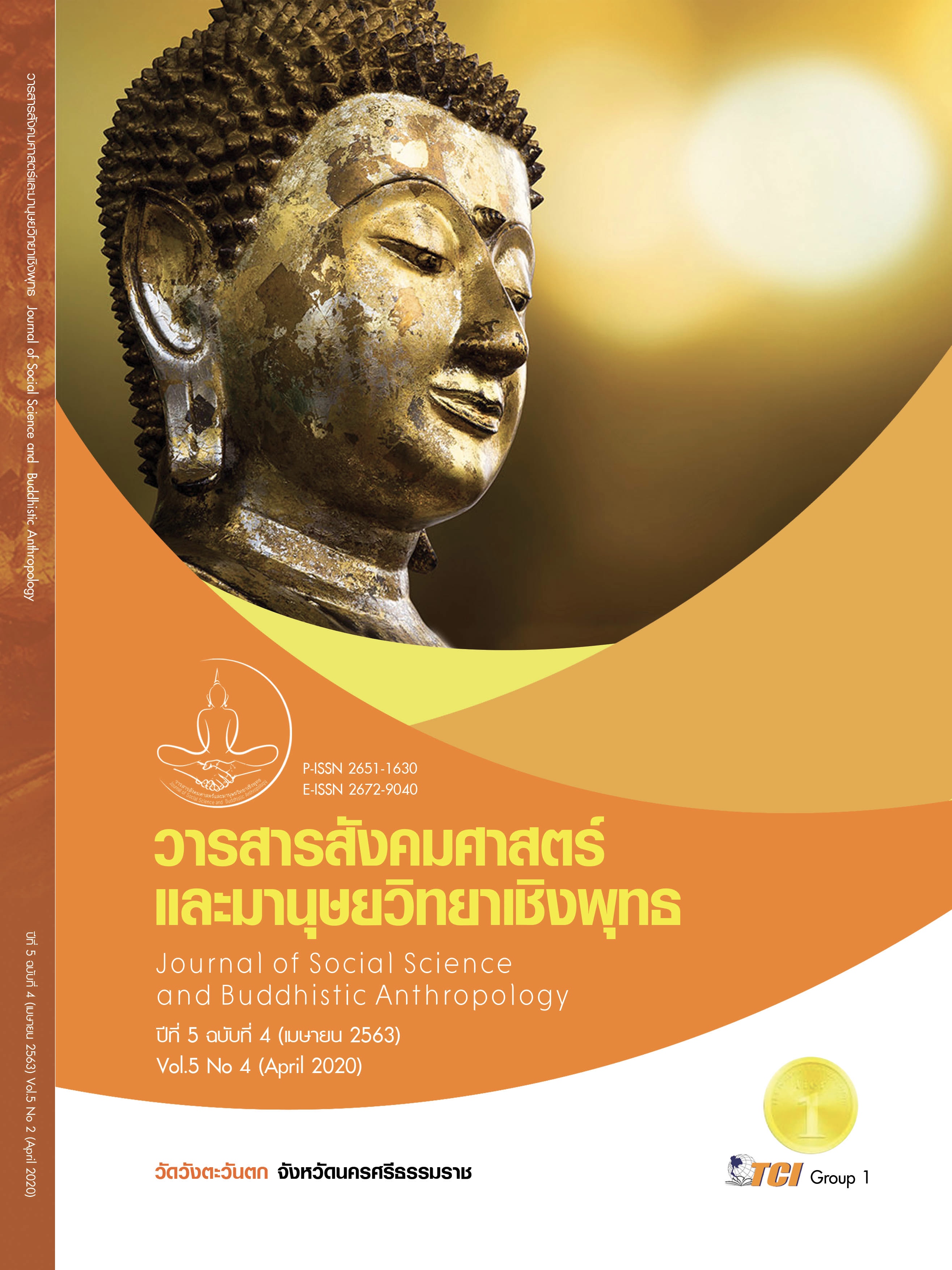RISK MANAGEMENT PROCESSES FOR SUBSTANCE DRUG AMONG TEENAGERS LIVING IN SLUMS: CASE STUDY OF SLUMS IN BANGKOK
Keywords:
Process, Risk Management, Teenagers Living In Slums, SubstanceAbstract
The aims of this qualitative research are to study risks and risk management processes for substance drug among teenagers living in slums. The key informants were. recovered addicts who used substance during their adolescent years and selected using purposive sampling technique. The interview data was classified, coded, and analyzed using thematic analysis and grounded theory. The findings indicated that there are multiple risks, which teenagers in slums experienced. These included trouble in the family, strict school codes, have friends who use substances, living near someone who abuse drugs, health concerns, death from longer term use, Modern communication technology facilitates for buy drugs and Risks after using the drug from trouble with the law enforcements. In addition, risk management processes for substance drug among teenagers living in slums depend greatly on their context and social interactions with others. As a result, they tend to present a different “version” of themselves based on a social context in order to avoid getting into trouble. For example, in family context, they would present themselves as a “good child” and continued to assure everyone that they did not use any drug. In school context, they would take on a role of “good students” and attended every classes while secretly used drug during break. In social context, they would take good care of their bodies to avoid looking like someone who used drug along with forming positive relationships with the authorities. By presenting themselves in these manners, they were able to cover up their drug use and create respected personas among authoritative figures. The suggestions from this study can be used as a database for implementing policies to prevent and solve drug problems among adolescents living in slums. The solutions should focus on the integration of all social institutions to completely end substance and drugs abuse among teenagers.
References
นภาภรณ์ หะวานนท์. (2552). วิธีการศึกษาเรื่องเล่า: จุดเปลี่ยนของการวิจัยทางด้านสังคมศาสตร์. วารสารสังคมลุ่มน้ำโขง, 5(2), 1-22.
นันท์ชัตสัณห์ สกุลพงศ์. (2559). พลังสุขภาพจิตในผู้ติดยาเสพติดหญิง: การวิจัยแบบผสานวิธีพหุระยะเพื่อพัฒนาเครื่องมือวัดและประสิทธิผลการปรึกษาทางจิตวิทยาแบบกลุ่มบูรณาการ. ใน ดุษฎีนิพนธ์ปรัชญาดุษฎีบัณฑิต สาขาวิชาการวิจัยพฤติกรรมศาสตร์ประยุกต์. มหาวิทยาลัยศรีนครินทรวิโรฒ.
นาย ก. (5 ตุลาคม 2562). การจัดการความเสี่ยงของวัยรุ่นใช้ยาเสพติดในสลัม. (นางสาว ภณิการ์ เพชรเขียว, ผู้สัมภาษณ์)
นาย ข. (5 ตุลาคม 2562). การจัดการความเสี่ยงของวัยรุ่นใช้ยาเสพติดในสลัม . (นางสาว ภณิการ์ เพชรเขียว, ผู้สัมภาษณ์)
นาย ค. (21 สิงหาคม 2562). การจัดการความเสี่ยงของวัยรุ่นใช้ยาเสพติดในสลัม. (นางสาว ภณิการ์ เพชรเขียว, ผู้สัมภาษณ์)
นาย ง. (22 กรกฎาคม 2562). การจัดการความเสี่ยงของวัยรุ่นใช้ยาเสพติดในสลัม. (นางสาวภณิการ์ เพชรเขียว, ผู้สัมภาษณ์)
นาย จ. (2562 สิงหาคม 21). การจัดการความเสี่ยงของวัยรุ่นใช้ยาเสพติดในสลัม. (นางสาว ภณิการ์ เพชรเขียว, ผู้สัมภาษณ์)
นาย ฉ. (17 ตุลาคม 2562). การจัดการความเสี่ยงของวัยรุ่นใช้ยาเสพติดในสลัม. (นางสาว ภณิการ์ เพชรเขียว, ผู้สัมภาษณ์)
นาย ช. (17 ตุลาคม 2562). การจัดการความเสี่ยงของวัยรุ่นใช้ยาเสพติดในสลัม. (นางสาว ภณิการ์ เพชรเขียว, ผู้สัมภาษณ์)
นาย ซ. (17 ตุลาคม 2562). การจัดการความเสี่ยงของวัยรุ่นใช้ยาเสพติดในสลัม. (นางสาว ภณิการ์ เพชรเขียว, ผู้สัมภาษณ์)
นาย ฌ. (17 ตุลาคม 2562). การจัดการความเสี่ยงของวัยรุ่นใช้ยาเสพติดในสลัม. (นางสาว ภณิการ์ เพชรเขียว, ผู้สัมภาษณ์)
นาย ญ. (21 สิงหาคม 2562). การจัดการความเสี่ยงของวัยรุ่นใช้ยาเสพติดในสลัม. (นางสาวภณิการ์ เพชรเขียว, ผู้สัมภาษณ์)
นาย ท. (17 ตุลาคม 2562). การจัดการความเสี่ยงของวัยรุ่นใช้ยาเสพติดในสลัม. (นางสาว ภณิการ์ เพชรเขียว, ผู้สัมภาษณ์)
นาย ธ. (22 มิถุนายน 2562). การจัดการความเสี่ยงของวัยรุ่นใช้ยาเสพติดในสลัม. (นางสาว ภณิการ์ เพชรเขียว, ผู้สัมภาษณ์)
นาย น. (5 ตุลาคม 2562). การจัดการความเสี่ยงของวัยรุ่นใช้ยาเสพติดในสลัม. (นางสาว ภณิการ์ เพชรเขียว, ผู้สัมภาษณ์)
นาย บ. (20 ตุลาคม 2562). การจัดการความเสี่ยงของวัยรุ่นใช้ยาเสพติดในสลัม. (นางสาว ภณิการ์ เพชรเขียว, ผู้สัมภาษณ์)
นาย ป. (20 ตุลาคม 2562). การจัดการความเสี่ยงของวัยรุ่นใช้ยาเสพติดในสลัม. (นางสาว ภณิการ์ เพชรเขียว, ผู้สัมภาษณ์)
พระไพศาล วิสาโล . (2553). สงบเย็นและเป็นประโยชน์. กรุงเทพมหานคร: สำนักพิมพ์เนชั่นบุ๊คส์.
วิภา ด่านธำรงกูล และคณะ. (2558). การพัฒนากระบวนการมีส่วนร่วมของชุมชน ในการป้องกันและแก้ไขปัญหา พฤติกรรมสังคมที่ส่งผลกระทบด้านสุขภาพ กาย จิตและสังคม ระยะที่ 1. ใน รายงานการวิจัย. จุฬาลงกรณ์มหาวิทยาลัย.
สำนักงานป้องกันและปราบปรามยาเสพติด. (2552). แนวคิดการป้องกันยาเสพติดในเยาวชนกลุ่มเสี่ยง. กรุงเทพมหานคร: บริษัท รุ่งศิลป์การพิมพ์ (1977) จำกัด.
อัครเดช ลำพาย. (2556). การศึกษาเพื่อการสร้างสรรค์ภาพภูมิทัศน์ : ชุมชนแออัดในกรุงเทพมหานคร. ใน วิทยานิพนธ์ศิลปกรรมศาสตรมหาบัณฑิต สาขาวิชาทัศนศิลป์ศิลปะสมัยใหม่. มหาวิทยาลัยศรีนครินทรวิโรฒ.
Arima Mishra. (2006). The everyday life in a slum in Delhi: View of the children In Deepak Behera ed. Childhoods in South Asia. Delhi: Pearson Longma.
Blumer Herbert. (1969). Symbolic interactionism : Perspective and methods. Englewood Cliffs, NJ: Prentice Hall.
Christine Bold. (2012). Using Narrative in Research. London: Sage.
Erving Goffman. (1956). The presentation of self in everyday life. Edinburgh: University of Edinburgh Social Sciences Research Centre.
Kathy Charmaz. (2014). Constructing Grounded Theory. London: Sage.
Molly Andrews et.al. (2013). Doing Narrative Research. London: Sage.
Sompoch Ratioran. (2012). The process of resilience promotion in school children in an urban slum area. Nakhon Pathom: Mahidol University.








